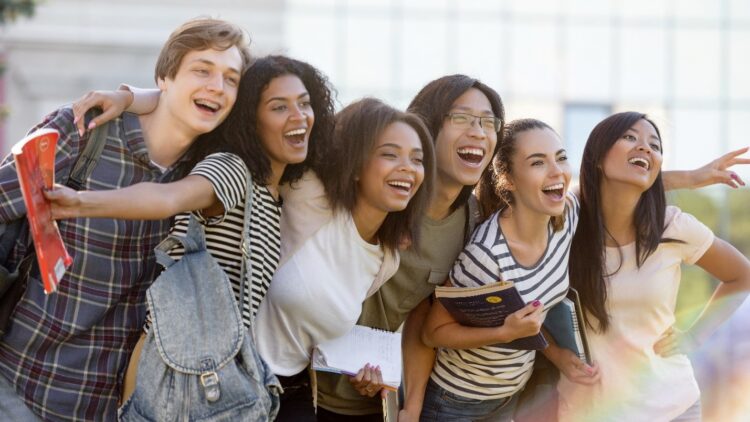The teenage years are a period of rapid change, growth, and self-discovery. For many teenagers, one of the most significant aspects of this phase is navigating body image. Body image refers to how an individual perceives their physical appearance, and for teenagers, these perceptions can be influenced by a variety of factors, including peer pressure, media portrayals, and social norms. This relationship with body image can be particularly complex as teens seek to establish their identity while facing societal pressures. In this article, we explore the factors that shape body image in teenagers and how they can develop a healthier, more positive relationship with their bodies.
The Influence of Media and Social Media
One of the most significant influences on teenagers’ body image today is the media, particularly social media. Platforms like Instagram, TikTok, and Snapchat often showcase idealized versions of beauty, featuring celebrities, influencers, and peers with seemingly perfect bodies. These portrayals can create unrealistic standards that teenagers feel pressured to meet. Filters, photo editing, and curated content on social media can distort perceptions of reality, leading to comparison and dissatisfaction with one’s own body. This constant exposure can cause teenagers to feel insecure, especially if they don’t fit into these often narrow definitions of beauty. Much like the pressure to find the perfect Diwali gifts for loved ones, teenagers may feel pressured to look a certain way, often leading to frustration and low self-esteem when they fall short of these expectations.
Peer Pressure and Social Expectations
Beyond the media, peer pressure plays a crucial role in shaping body image during the teenage years. Adolescents are highly influenced by their friends, classmates, and social groups as they seek to fit in and be accepted. In some cases, comments or teasing from peers about one’s weight, appearance, or clothing can contribute to negative body image. The desire to conform to group norms, whether it’s about body size, fashion, or beauty standards, can lead teenagers to develop unhealthy habits or engage in body-shaming behaviors. On the other hand, supportive peer relationships that encourage acceptance and diversity can foster healthier attitudes toward body image. It is crucial for teenagers to learn to appreciate their unique features and to challenge societal expectations that may promote unrealistic ideals.
The Role of Family and Upbringing
A teenager’s relationship with body image is also shaped by their family and upbringing. The attitudes, beliefs, and behaviors of parents and caregivers can have a significant impact on how teens view their bodies. Parents who model positive body image and emphasize self-care over appearance can help their children develop a healthy relationship with their bodies. On the other hand, families that place a heavy emphasis on appearance or make critical comments about weight and looks can contribute to feelings of insecurity. Encouraging healthy habits, such as regular physical activity, balanced eating, and self-love, can help teens form a positive body image. Just like thoughtful parents select Diwali gifts to bring joy to their children, fostering an environment of support and love for one’s body can contribute to long-term self-confidence.
Developing Healthy Habits and Self-Acceptance
Building a positive body image is not about achieving a particular appearance but rather developing healthy habits and cultivating self-acceptance. Encouraging teenagers to focus on overall health rather than striving for perfection can help them create a more balanced relationship with their bodies. This includes eating nutritious foods, engaging in physical activities they enjoy, and practicing self-compassion. Promoting activities like yoga, meditation, or journaling can also help improve mental well-being and reduce stress related to body image. It’s essential to teach teenagers that bodies come in all shapes and sizes, and each body is unique and valuable. Encouraging self-love and focusing on internal qualities, such as kindness and intelligence, can shift the focus away from external appearance.
The Impact of Body Image on Mental Health
A negative relationship with body image can significantly affect a teenager’s mental health. Adolescents struggling with body dissatisfaction may be at a higher risk for developing mental health issues such as depression, anxiety, and eating disorders. These conditions can be exacerbated by the pressures of trying to meet external expectations, leading to unhealthy behaviors like extreme dieting or excessive exercise. Addressing body image issues early and encouraging open conversations about self-esteem can help mitigate these risks. Professional support, such as therapy or counseling, can also provide teenagers with the tools they need to develop healthier attitudes toward their bodies. Just as families come together to support one another during the Diwali festival, open dialogue about body image can provide essential support to those struggling with negative self-perceptions.
Promoting Positive Body Image in Society
Creating a culture that values diversity in body types and promotes inclusivity is essential in fostering a positive body image for teenagers. This means challenging the idea that beauty is defined by a single standard and embracing different body shapes, sizes, and ethnicities. Educational programs in schools that focus on self-esteem, media literacy, and body positivity can help teenagers develop healthier views of themselves. Encouraging role models who promote body diversity, self-acceptance, and mental well-being can also inspire teenagers to adopt more positive attitudes toward their appearance. Society’s shift toward inclusivity and self-love can help reduce the pressure placed on teenagers and empower them to embrace their authentic selves.
Conclusion: Embracing Self-Love and Acceptance
The relationship between teenagers and body image is complex, but it is possible to foster a healthier, more positive connection with one’s body. Understanding the factors that influence body image, such as media, peer pressure, family, and societal standards, is the first step in addressing the issue. By promoting self-acceptance, healthy habits, and open communication, teenagers can develop a more balanced relationship with their bodies. Just as Diwali is a time for self-reflection and celebration of life’s blessings, teenagers should be encouraged to embrace their bodies as unique and beautiful, regardless of societal standards. Ultimately, self-love and acceptance are the keys to building confidence and mental well-being, empowering teenagers to navigate their adolescent years with a healthy mindset.
















